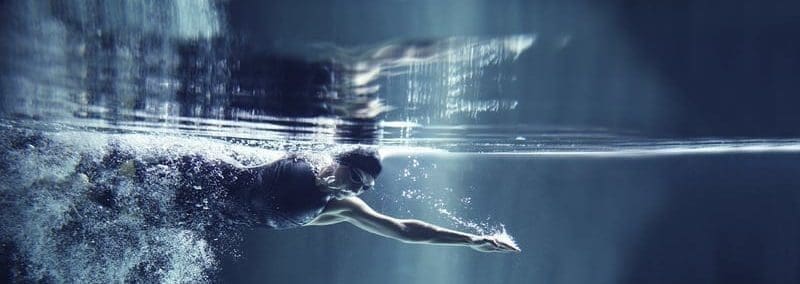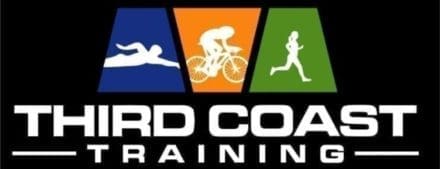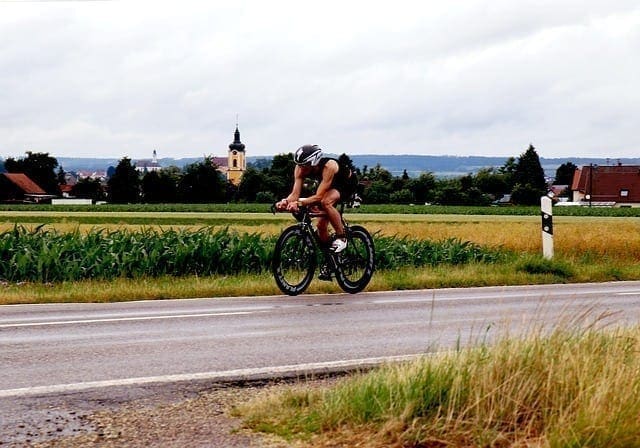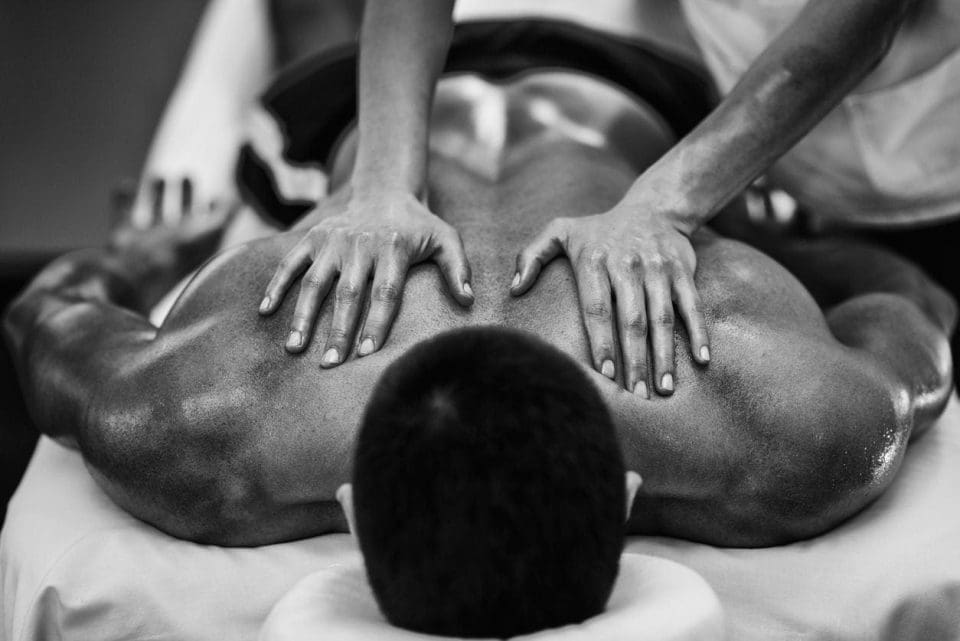
Triathlon clothing, one piece vs. two piece
March 20, 2018
Belly Breathing
April 13, 2018Triathlon Bike Gearing 101 for Flatlanders and Mountain Climbers
Have you ever been out on a training ride and found conditions in which you couldn’t find the correct gearing? shifting between gears and being stuck between spinning too much or pushing a harder gear that makes your legs burn and fatigue. Your triathlon bike gearing needs can also change from venue to venue so be aware of the possible elevation changes typically provided by event sites.
Gears are one of the misunderstood components on a triathlon bike, picking the right gear for the conditions can significantly increase your performance on a bike, and even more during a triathlon event.
The Basics of Bike Gear Ratios.
Front chainring (front gears)
Most bikes nowadays come with either a 53/39 tooth chainring on the front or what we call a compact which can either be a 50/34t, 50/36t or a 52/36t. While these combinations are the most common, there are occasions where gearing such as a 54/44t is used. But for the average Triathlete is fairly unlikely. Knowing the course, or area you’re riding or going to, goes a long way in picking the right gear combination.
The size of gears on the front of the bike is calculated by the number of teeth on the chainring. The more the number of teeth on the front chainring, the more power is required to push that gear, or the higher the top end speed is.
If we break this into categories, we are provided with a compact (50/34t), a semi compact (52/36t) and a standard (53/39t) crankset.
Rear cassette (rear gears)
While the front gears have limited options, the rear gears (cassette) can confuse the average cyclist. The most common gearing range on the rear is marked again in the number of teeth on the cassette. Your typical rear cassette combinations come in a range of sizes. 11-23t, 11-25t, 11-28t, 12-23t, 12-25t, 12,28t. These are of course the most common, with newer bike models and rear derailleurs now able to run up to a 30t on the rear cassette.
Of course, this entirely depends on the number of gears you have on the back of the bike, is to what cassette ratios are available. The higher the number of gears available, means the closer the number of teeth can be between each step or each gear shift. We call this the step between gears. Allowing a closer step between each gear allows better controlling of your cadence, so as explained in the first paragraph, you don’t get stuck in either a too easier or harder gear ratio.
If we break this into categories as an example a
11/12/13/14/15/17/19/21/23/25 (would be called a “11-25” cassette)
11/12/13/14/15/17/19/21/24/28 (would be called a “11-28” cassette)
12/13/14/15/16/17/18/19/21/23 (would be called a “12-23” cassette)
Picking the right gearing for the conditions.
If we take two cites Houston, Texas and Boulder, Colorado. These are two completely different terrains, which means the gearing choice for a triathlon bike can be quite different. While Houston, Texas is basically flat terrain, Boulder, on the other hand, is well known for its mountains and hilly terrain. To take that into account, Boulder has climbs such as Pikes Peak which climbs above 14 000 feet, with an average gradient of 6.5%. So the gearing used for a Triathlete is much different from a flat city such as Houston.
So how do we pick the right gearing for these conditions? First of all, if we take Boulder, Colorado. With the area being quite mountainous there will be a lot of climbs with steeper gradients. Which means your lower gear needs to be able to provide you with an easy enough gearing to get you up the climbs without coming to a standstill around the corners and/or allowing you to control your cadence, speed and Heart rate better while climbing. This means you are able to control both your power and heart rate better to your fitness as a result.
Typically, in a mountainous area, a compact crankset becomes more popular to the inexperienced triathlete or the triathlete that tends to ride a higher cadence. Moving into a compact crankset gives you a bigger range of lower gearing for the climbs. Combining a 50/34t or a 50/36t with a 12-28t gives even the most novice of cyclists the ability get over the climbs. Preventing muscle fatigue from being over geared and pushing a very low cadence up the climbs.
Depending on the gradient of climbs the 50/34 or 50/36t can be paired with a difference cassette. Using smaller front chainrings allow the triathlete to pick and choose the combination on the rear cassette in much more detail. Usually, the more gradual the climb, the closer the number of teeth of each gearing can be used on the back such as an 11-23t or 12-25t. Because you are riding at a more controlled speed you want to have better control over your cadence, and again Heart rate and power.
With a climb that changes gradient more rapidly, you need to compensate this with a broader range of teeth on the rear, such as an 11-28t. Since your cadence is going to be changing quite dramatically on the steeper sections you need to account for this with an easier gear, while still having the lower number of teeth for the lower gradients. This also comes into context on descending, a cassette such as an 11-28t will allow the 11t to be used on a descent, giving you a slightly higher top end speed, that a 12-28t can’t give you but still proving enough “harder gearing” for the faster or downhill sections.
If we compare Houston, Texas a flatter area for riding, gear choice is relatively easier. Depending on your current level of fitness, usually, a larger front chainring combination such as a 53/39 is more popular. Because you are riding on flat terrain a higher average speed, compared to that of a hillier area. When you’re riding on the flat you just have the wind that affects the gearing choice. Picking a larger chainring on the front will allow a higher top end speed with a tail wind, and combining this with a straight block cassette (smaller step between each gear) allows you to fine tune your cadence constantly. While still allowing small enough gearing for the head wind sections.
Because you don’t have the change in gradients on a climb, the choice of gearing you will use becomes tighter, rather than larger jump between each gear shift.
To make this more complicated, if the area you are riding lacks windy conditions and the average speed is constant, an even closer gear ratio is possible. Gearing such as 54/44 can allow a slighting larger gearing for stronger cyclists, while still providing a lower gearing with the 44t front chainring if the wind picks up. But typically, this is too large of a gear for the novice triathlete.
Undulating Terrain
So, what happens if we put these two types of terrains together, or your budget doesn’t allow for numerous ratios of gears. The past few years Shimano and other brands have released a semi compact crankset. Which means it provides a big enough gear for the flat terrain and downhills (52t) and an easier enough gear for climbing (36t). The 52/36t combination is becoming more and more popular with bike brands and triathletes since it gives the best of both worlds. When we have a 52/36t combination it allows us to customize the rear gearing. For hilly or mountainous terrain we can go for a larger cassette range (up to a 30t), and during those flatter rides a closer and smaller ratio (11-23t)
What if I pick the wrong gearing?
While at some point in time we have all thought we are stronger than we are or underestimated how hard or long the climbs are. Being over geared on climbs can mean quicker muscle fatigue, and sometimes knee joint or quadricep soreness from pushing a to low cadence. While the perfect cadence is still be debated today by triathlon coaches, we can all agree that riding up numerous climbs with a lower cadence produces more muscle fatigue and can even prevent you from being able to ride up the steepest of gradients on the climb and the last thing we want is to have to walk up the climb in our cycling shoes.
Remember to pick the right gearing based on your fitness, terrain and other conditions such as the wind. If you don’t know the area you are riding a quick search on google maps to check the area can provide a lot of detail about the gearing choice you can make. While all of this is somewhat correct, a lot of this depends on the triathlete’s ability to produce power and what their preferred cadence is. The more experienced the Triathlete is, means typically the rider will have a higher power output. This means this type of Triathlete can use a larger gearing combination than that of a novice triathlete since they are able to turn over the gearing with much more ease. If you’re a novice triathlete or on a limited budget, a 52/36t front combination will suffice enough for all types of terrains and conditions.
Working smarter can prevent you from having to work harder and as a Triathlete remember you still need to be able to run off the bike, so the less your legs are fatigued after the ride, the better run you can produce.






